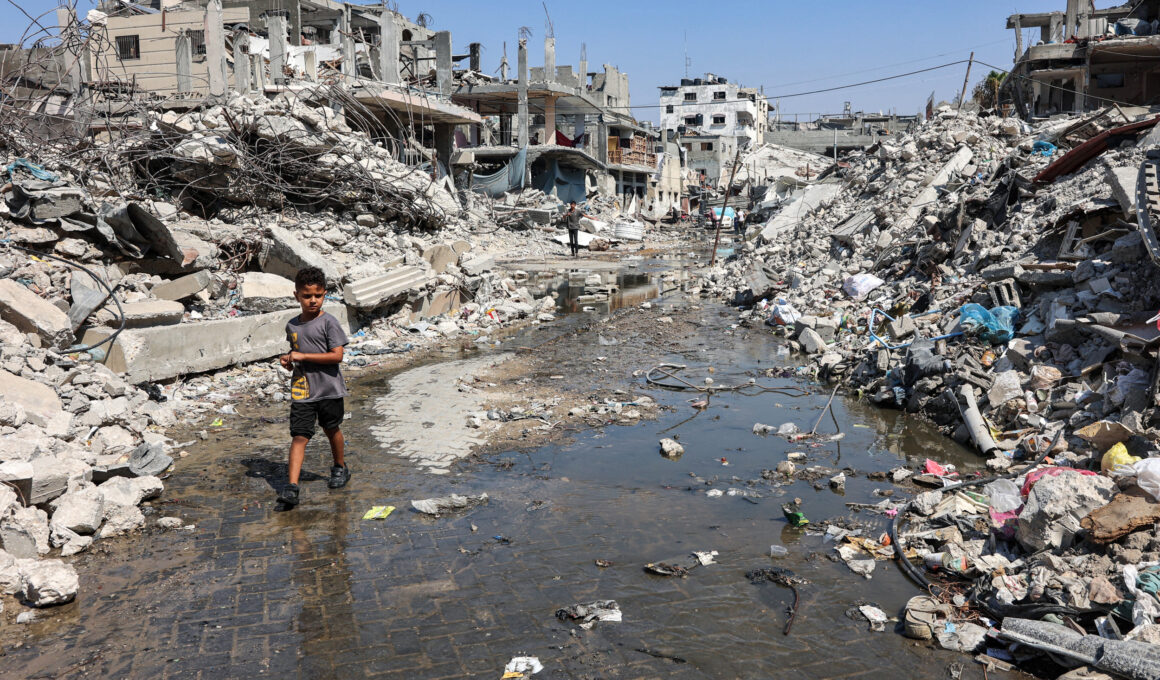A U.S. official said on Friday that mediators are preparing to implement a Gaza ceasefire and hostage-swap deal that would end fighting in the region.
For two days, mediators from Qatar, Egypt and America conducted talks in Qatar’s capital city of Doha in an effort to put an end to the 10-month Israel-Hamas war.
Earlier on Friday, the Associated Press (AP) reported that meditators expressed hope for an imminent deal. A U.S. official then told reporters that a proposal designed to bridge every gap between Israel and Hamas is set to be implemented before a final agreement is reached.
On October 7, Hamas, a Palestinian militant group, launched a surprise attack on Israel, killing roughly 1,200 people and taking some 250 hostages. Israel subsequently launched a military operation in Gaza that has killed over 40,000 Palestinians, according to local health officials. There are about 110 hostages remaining in Gaza and about a third of them are believed to be dead.
President Joe Biden said in a statement on Friday that he directed his negotiating team in Doha “to put forward the comprehensive bridging proposal presented today, which offers the basis for coming to a final agreement on a ceasefire and hostage release deal.”
He continued: “I spoke separately with Amir Sheikh Tamim [Bin Hamad Al-Thani] and President [Abdel Fattah el-] Sisi to review the significant progress made in Doha over the past two days of talks, and they expressed the strong support of Qatar and Egypt for the U.S. proposal as co-mediators in this process.”
“Our teams will remain on the ground to continue technical work over the coming days, and senior officials will convene again in Cairo before the end of the week,” Biden said, adding that U.S. officials will report to him regularly.
Biden ended his statement with a warning: “No one in the region should take actions to undermine this process.”
When contacted by Newsweek on Friday afternoon, the U.S. Department of State referred to a joint statement from the U.S., Egypt and Qatar that was published by the White House earlier Friday, which stated, in part, “These [cease-fire] talks were serious and constructive and were conducted in a positive atmosphere.”
In late May, Biden proposed a three-phase ceasefire plan, starting with a “full and complete ceasefire,” a withdrawal of Israeli soldiers from densely populated areas in Gaza and an Israeli hostage-Palestinian prisoner exchange, which would free hundreds of Palestinian prisoners.
The first phase in Biden’s plan would include releasing a number of these hostages, including women, the elderly and the wounded. In the second phase, the rest of the living hostages would be released and the ceasefire would become permanent. Lastly, the third phase would start the major reconstruction of Gaza.
It is unclear how closely the ceasefire and hostage-swap deal that mediators are reportedly preparing to implement resembles Biden’s proposal. However, the White House said in a statement on Friday that the latest proposal is “consistent with the principles” of Biden’s deal and a resolution from the United Nations Security Council, which also proposed a three-phase plan to end the war.
Hamas said that the latest proposal diverged significantly from the previous deal to which it agreed in principle, AP reported.
Israeli Prime Minister Benjamin Netanyahu‘s office said in a statement that it “appreciates the efforts of the U.S. and the mediators to dissuade Hamas from its refusal to a hostage release deal.”
Secretary of State Antony Blinken is set to travel to Israel on Saturday “to continue intensive diplomatic efforts to conclude the agreement for a ceasefire and release of hostages and detainees through the bridging proposal presented today by the United States, with support from Egypt and Qatar,” Vedant Patel, deputy spokesperson for the State Department, said in a statement on Friday.
Patel continued: “This proposal would achieve a ceasefire in Gaza, secure the release of all hostages, ensure humanitarian assistance is distributed throughout Gaza, and create the conditions for broader regional stability.”
Update 08/16/24, 5:21 p.m. ET: This article has been updated with additional information.







